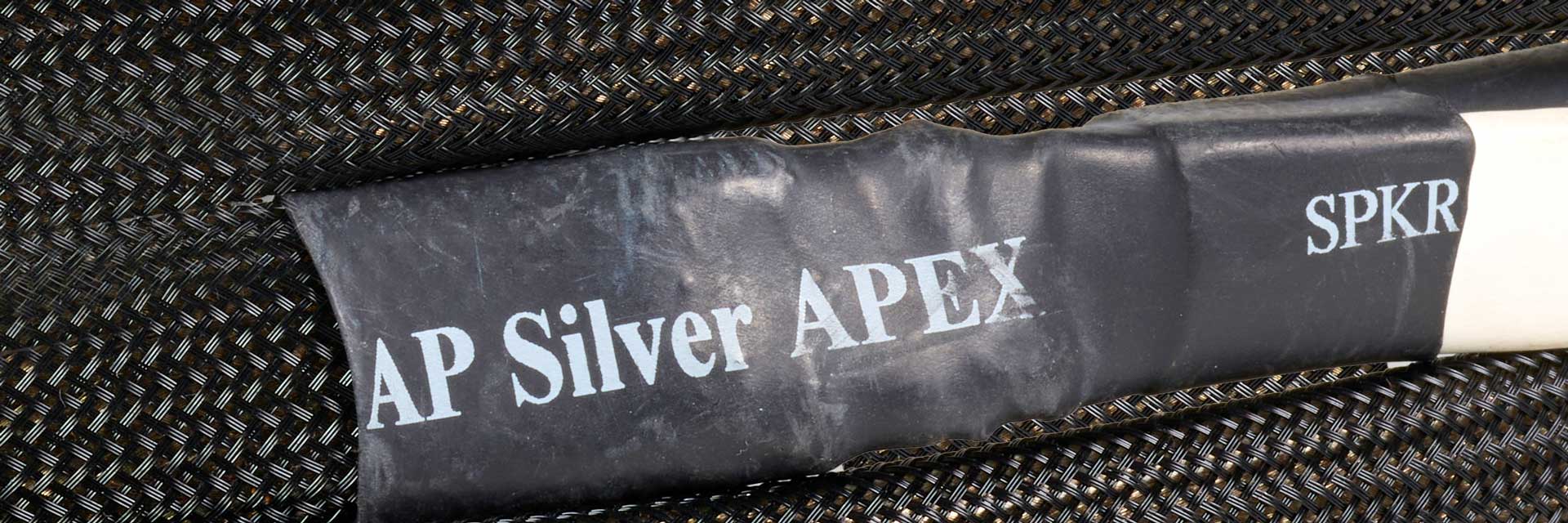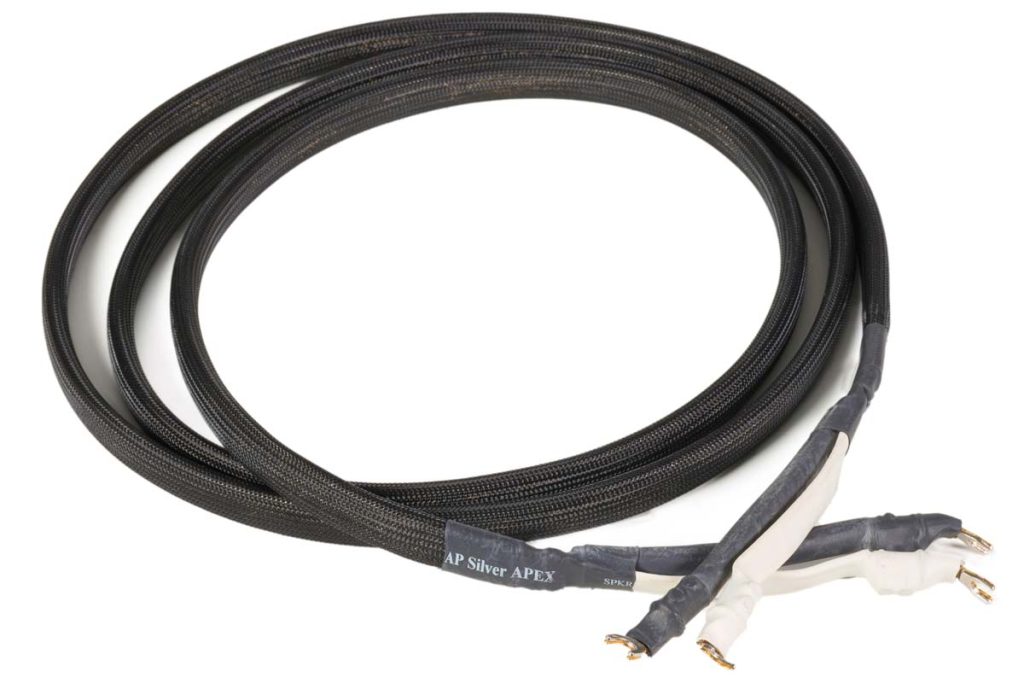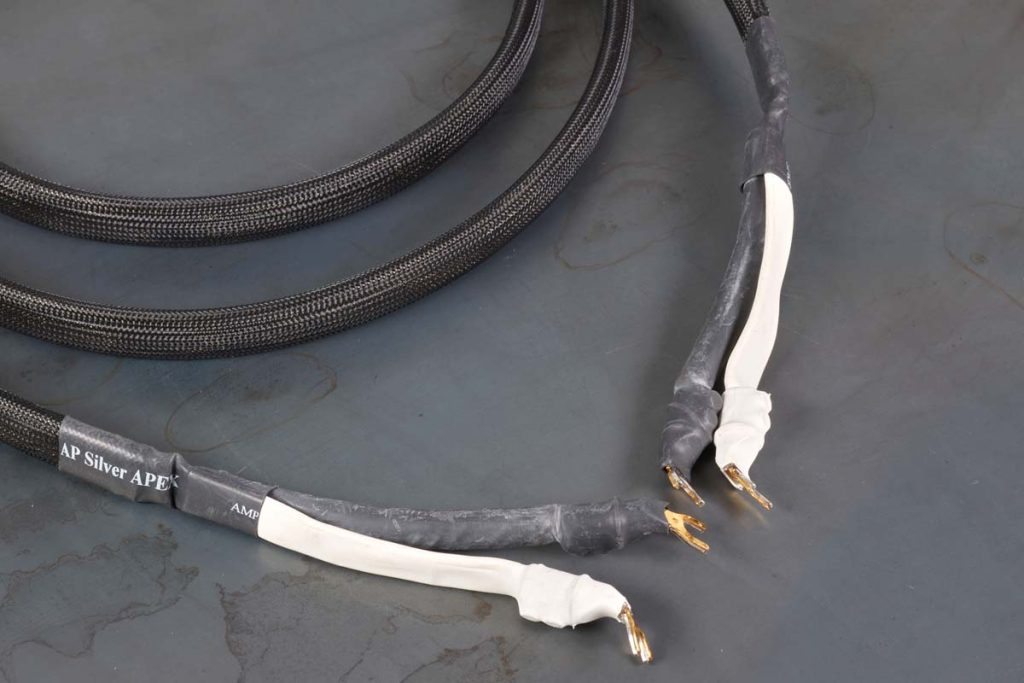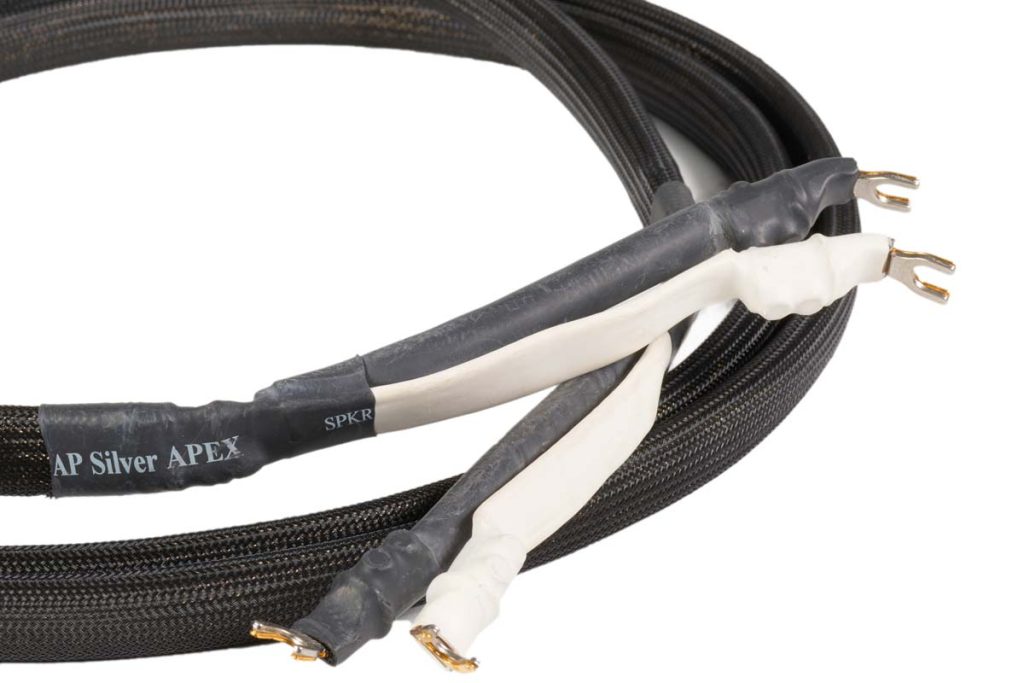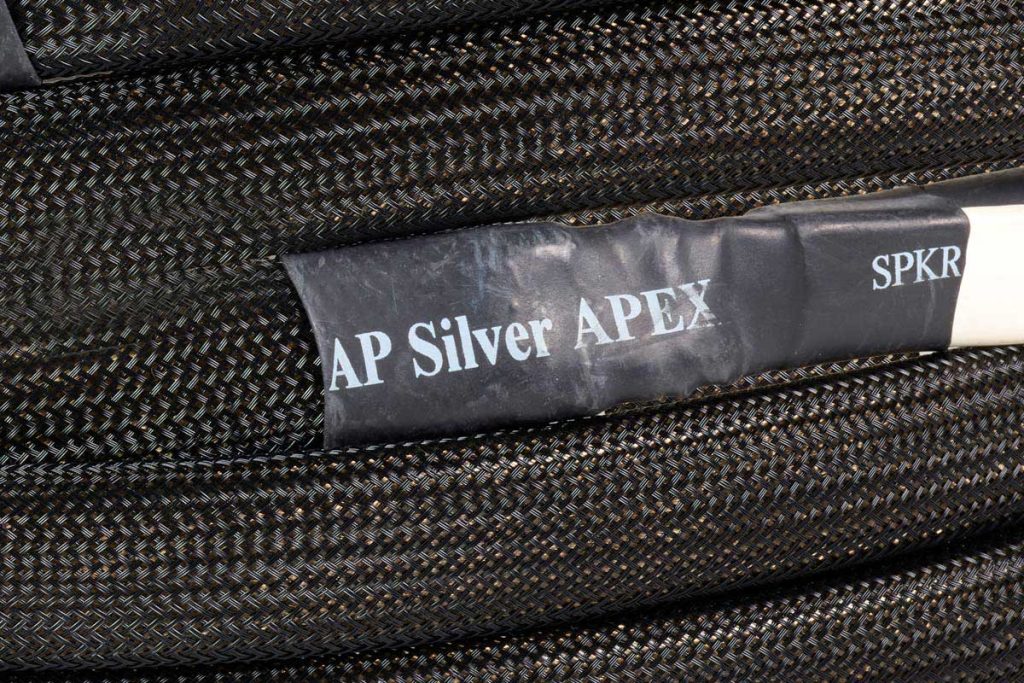Only the Americans can manage to design a high-end cable with a completely unspectacular, even “un-culinary” exterior. However, in the case of the Silver Apex Speaker from the U.S. cable specialist Analysis Plus, there is a big surprise behind the modest façade.
Outrageous! Who do they think they are? Where are the wooden boxes? Where are the white gloves? Where is the signed certificate of authenticity on handmade paper? The Analysis Plus Silver Apex Speaker I pull out of the little customs-banded box sent to me by German distributor Hifi2die4 are cables that look extremely plain: black, slightly shiny insulation, two-tone heat-shrink terminations, and matte silver-plated spades on the ends. At Analysis Plus, a company founded in 1992 in Flushing, Minnesota, they have apparently not yet heard of that special clientele for whom all components, including the wiring, must also be eye-catchers.
A look at the manufacturer’s homepage (www.analysis.plus) is enlightening, as it quickly becomes clear that Analysis Plus operates on two tracks. The Americans distinguish between “Home Audio” and “Pro Audio”, and already on the homepage they present a series of short video statements, given by blues and rock musicians who rely on Analysis Plus cables in their rough everyday life on stage. A business in which optical bling is of no consequence at all. The cables are expected to be resilient and remain reliable regardless of rough handling. This means stable strain relief for the plugs as well as shielding that doesn’t immediately fall apart when stepped on or driven over while also reliably keeping interference away. Anyone who has ever been to a sound check at a live concert knows how stubbornly hum loops can persist when, for example, you plug your Fender Telecaster into your Marshall amp. That sound like an angry swarm of hornets which tends to occur when plugs and/or cables have already been hit or short-circuited.
The cliché persists that musicians generally own lousy stereo systems (or none at all) and pay little attention to good sound, even when it comes to stage equipment. But this is precisely what has been changing in recent years – as can be seen from the fact that the once ubiquitous garage sound is increasingly disappearing, especially from live recordings of rock concerts.
And that brings us back to Analysis Plus. Here they never tire of emphasizing that they develop cables strictly under scientific aspects and that sound always plays a central role. This is reminiscent of the off-road Porsche with four-wheel drive that fans were begging for for years on end (in vain) until the Zuffenhausen company finally caved and actually put an accomplished SUV on the wheels.
At Analysis Plus, the high-end line-up has inherited some genes from the professional cables. Ask Jürgen Sachweh, head of German sales, about the history of Analysis Plus products, and he’ll tell you exciting details about a company that still supplies government organizations like NASA and major global players like Intel in the U.S. – and for whom the high-end business is more of a side effect of its core competencies. The connectors were developed by the late cable guru Mark Markell, who identified the skin effect as a crucial source of signal degradation (see info box). As a result, Markell developed a waveguide cable with an oval cross-section that was very complex to manufacture and whose geometry was created incorporating countless test runs and myriads of measurements. Analysis Plus is not afraid of the legions of copyists on the scene – as Jürgen Sachweh knows: “The white papers on cables have all been published,”. The oval cross-section, which according to Sachweh can only be implemented with a great deal of effort in manufacturing (which is probably why the company is so relaxed about design documents), “is the only geometric shape of the cable cross-section that does not experience any skin effect,” Sachweh emphasizes.
In this way, the resistance of the cable, which has a complex coaxial design in the case of Analysis Plus, does not change significantly, no matter which frequencies are sent through it. The discoloration caused by the skin effect, which we had more or less come to terms with, should not occur in Analysis Plus cables.
Great promises – which the listening test largely confirmed. Fortunately, the pair of “Analysis Plus Silver Apex Speaker” cables, which Jürgen Sachweh had put in the package along with other cable treats (such as excellent XLR-NF cables), was already burnt in. The manufacturer states in its package insert that the cables “normally play well right out of the box”, but would sound even better “after a burn-in time of about 300 hours”. A time window that is unfortunately hardly feasible in everyday testing, and therefore Jürgen Sachweh donated a pair of cables that had audibly already successfully completed the burn-in procedure.
In a blind test, one would like to present the sonic results to those who preach that cables do not change anything in the sound. Only to feast for a while on amazed faces and deep disbelief. Some time ago, for reasons of nostalgia and experimentation, a pair of Quadral Shogun Mk II from the late 1990s found their way into my home. Speakers to which I had previously attested a rather mediocre spatiality and a wavy frequency response with audible discolorations in the vocal range. Since the Analysis Plus Silver Apex replaced the previous speaker cable, I have to apologize to the Quadral old-timers. Suddenly, I get as comprehensible as convincing width and depth layering, if the respective recording allows for it. The most fascinating thing is the authentic voice reproduction that the Shoguns are capable of after the cable exchange. People whose singing voice I know well from real life, such as the classical soprano Christiane Karg, suddenly seem to stand before me in the flesh. And I get goose bumps from so much vocal and musical presence. Of course, this is only a snapshot; of course, with a different chain, this can also produce different results. Since the Analysis Plus Silver Apex Speaker is not cheap at 4850 Euros for the three-meter pair, the recommendation can only be: Try it for yourself – and then almost certainly pillage your bank account.
SKIN EFFECT
The term Skin effect describes the tendency for a signal in a cable not to use the entire conductor cross-section, but to push to the edge. The effect becomes stronger as frequency increases. Eventually, the music signal passes through the conductor only just below the surface, causing distortion. The skin effect also amplifies the so-called proximity effect in cables with two round adjacent conductors. Here, the adjacent conductors influence each other electrically, which also alters the signal. Analysis Plus counters these problems with an interleaved design of the oval waveguide cables to not only attenuate distortion, but to eliminate it completely.
Accompanying Equipment
Network player/DAC: Esoteric N-01XD | CD player: Mark Levinson No. 390S | Turntable: Clearaudio Innovation Compact, Artkustik Seismograph | Cartridges: Clearaudio Da Vinci and Jubilee MC, Denon DL-103R | Phono amplifier: Clearaudio Balance V2 | Preamplifier: Cambridge Audio Edge NQ, Mark Levinson No. 38S | Integrated amplifiers: Mark Levinson No. 5805, Aavik U-380, Trigon Exxceed, Sony TA-F 5000 | Power amplifiers: Cambridge Audio Edge M, Mark Levinson No. 27 | Loudspeakers: Infinity Kappa 7.2 Series II, SoundSpace Systems Aidoni, Quadral Shogun Mk II | Cables: from Sommer Cable, in-akustik, AudioQuest, Silnote Audio and Morrow Audio among others
Speaker cable
Analysis Plus Silver Apex Speaker
Concept: loudspeaker cable in oval waveguide construction | Assembly: various lengths and connector assemblies | Warranty period: 2 years | Price: length dependent; e.g. 2 x 3 m at 4850 €
Hifi2die4
Austraße 9
73575 Leinzell
Phone +49 7175 909032 or +49 179 2991449
hifi2die4@gmx.de

